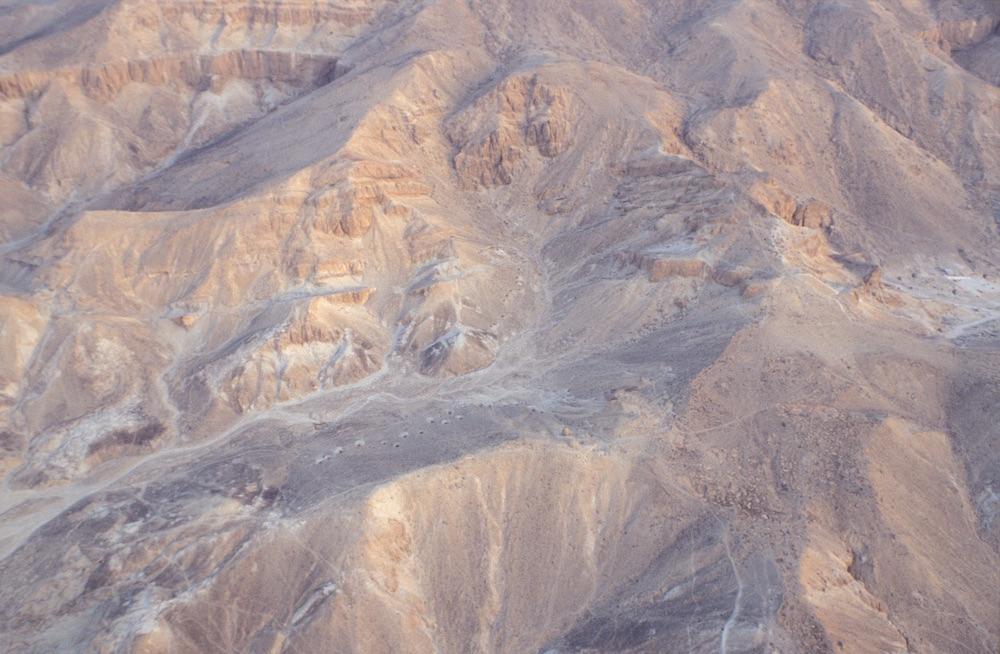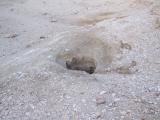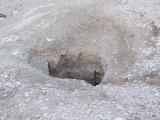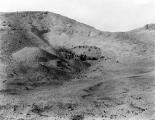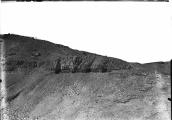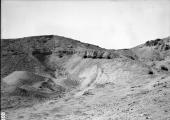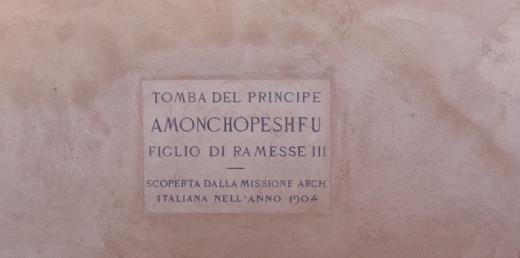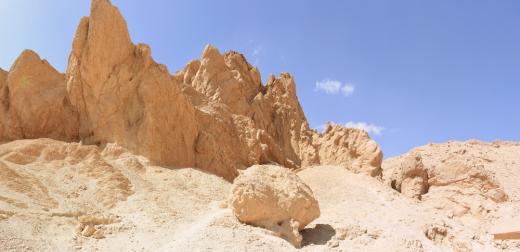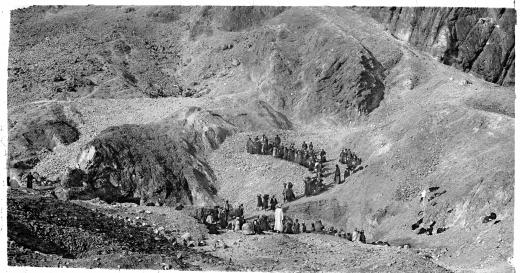QV 98
Anonymous
Entryway A
See entire tombA vertical shaft that is considerably eroded. There is no protective modern masonry surround and substantial debris has accumulated in the shaft.
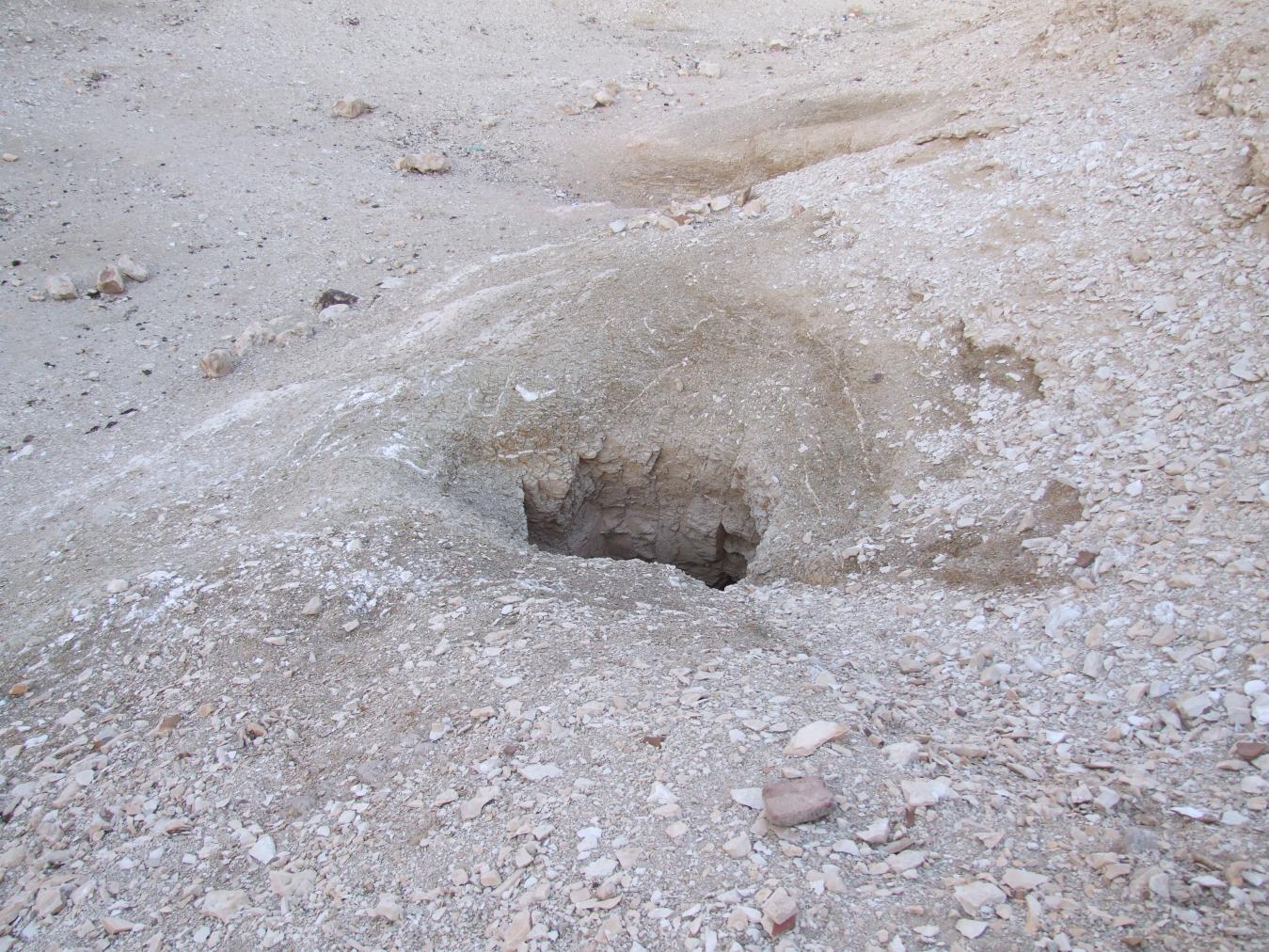
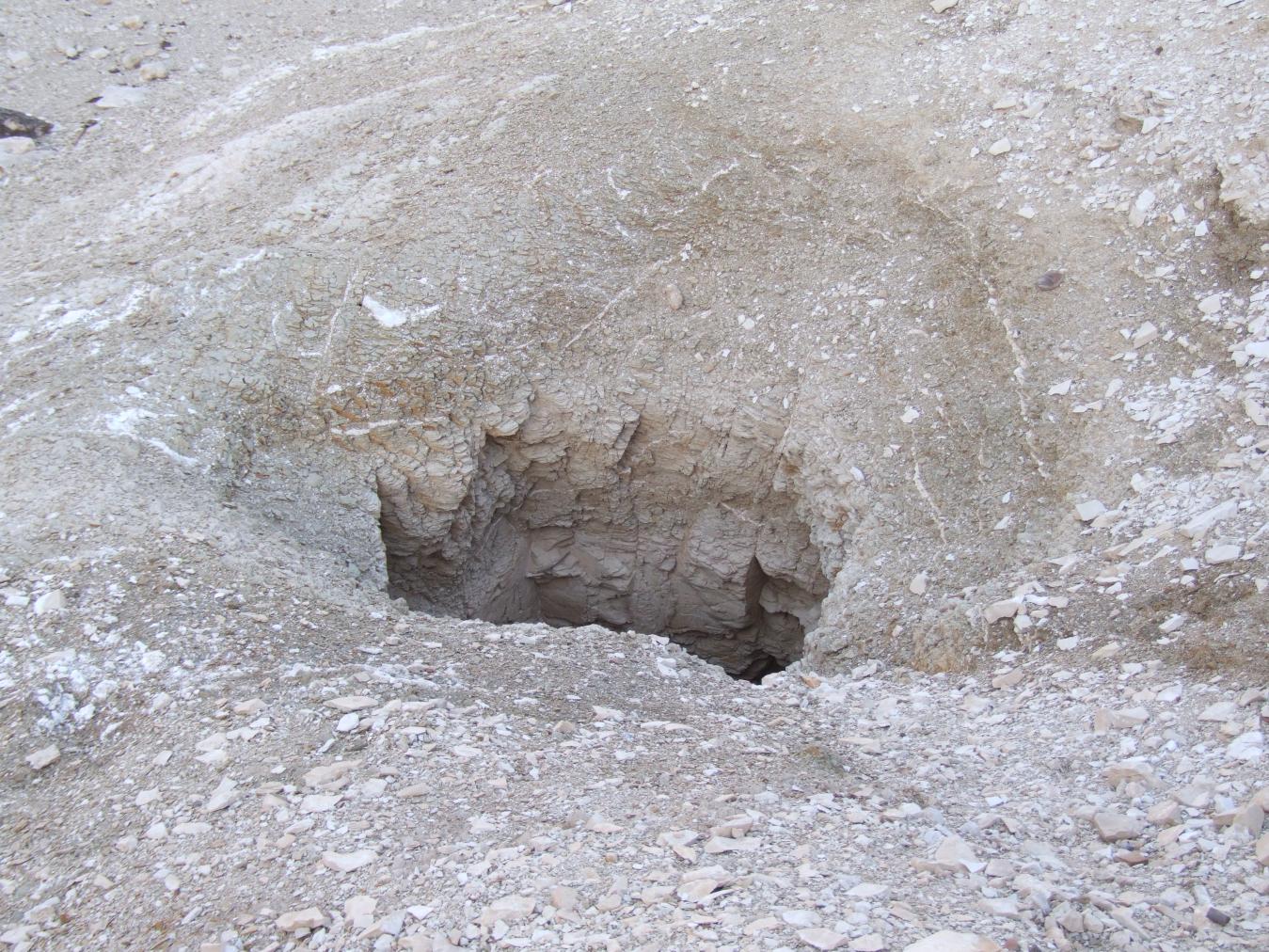
Burial chamber B
See entire tombA small, square undecorated burial chamber that lies on axis with the tomb's entrance. There are remnants of plaster on the western wall.
Chamber plan:
SquareRelationship to main tomb axis:
ParallelChamber layout:
Flat floor, no pillarsFloor:
One levelCeiling:
Flat
About
About
QV 98 lies in the Valley of Prince Ahmose, a small Wadi immediately adjacent to and south of the main wadi. The tomb consists of a heavily eroded shaft (A) leading to a small, undecorated burial chamber (B). It is substantially filled with debris.
The Italian Archaeological Expedition discovered and excavated the tomb in 1903. It was last cleared in 1988 by the Franco-Egyptian Mission.
Site History
The tomb was constructed in the 18th Dynasty.
Dating
This site was used during the following period(s):
Exploration
Conservation
Site Condition
Since QV 98 is mostly filled with debris, it was not assessed by the GCI-SCA team from the interior. Trash has been thrown into the tomb and it is susceptible to continuing erosion from surface water draining through the Valley of Prince Ahmose. While the volume of such water is relatively small compared to that of the main Wadi, the susceptibility of the surrounding shale to water accelerates the rate of decay, as does the lack of a protective surround at the shaft entrance. Since substantial debris has accumulated in the shaft, the GCI-SCA has recommended that the tomb be entirely reburied and marked for future identification.
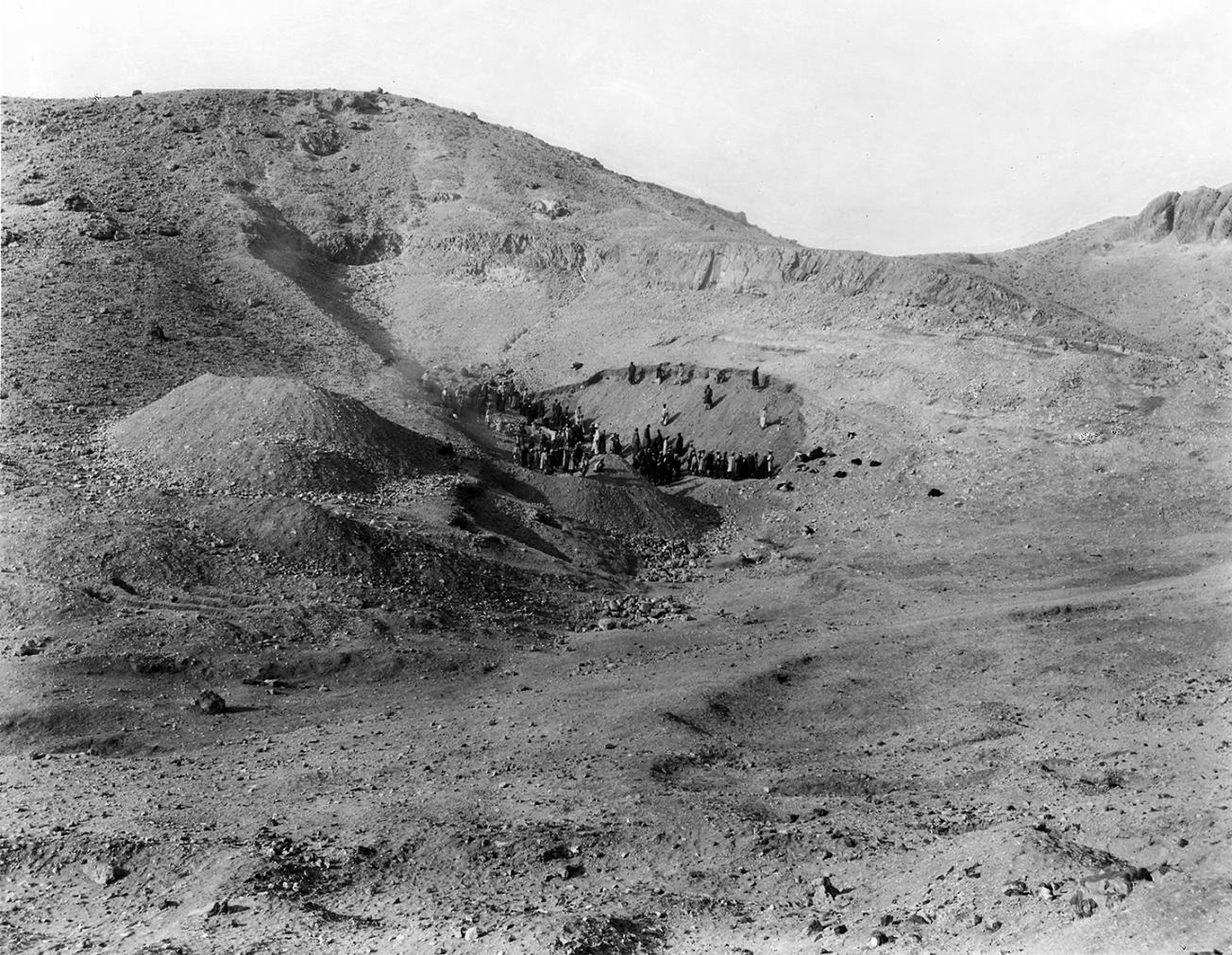
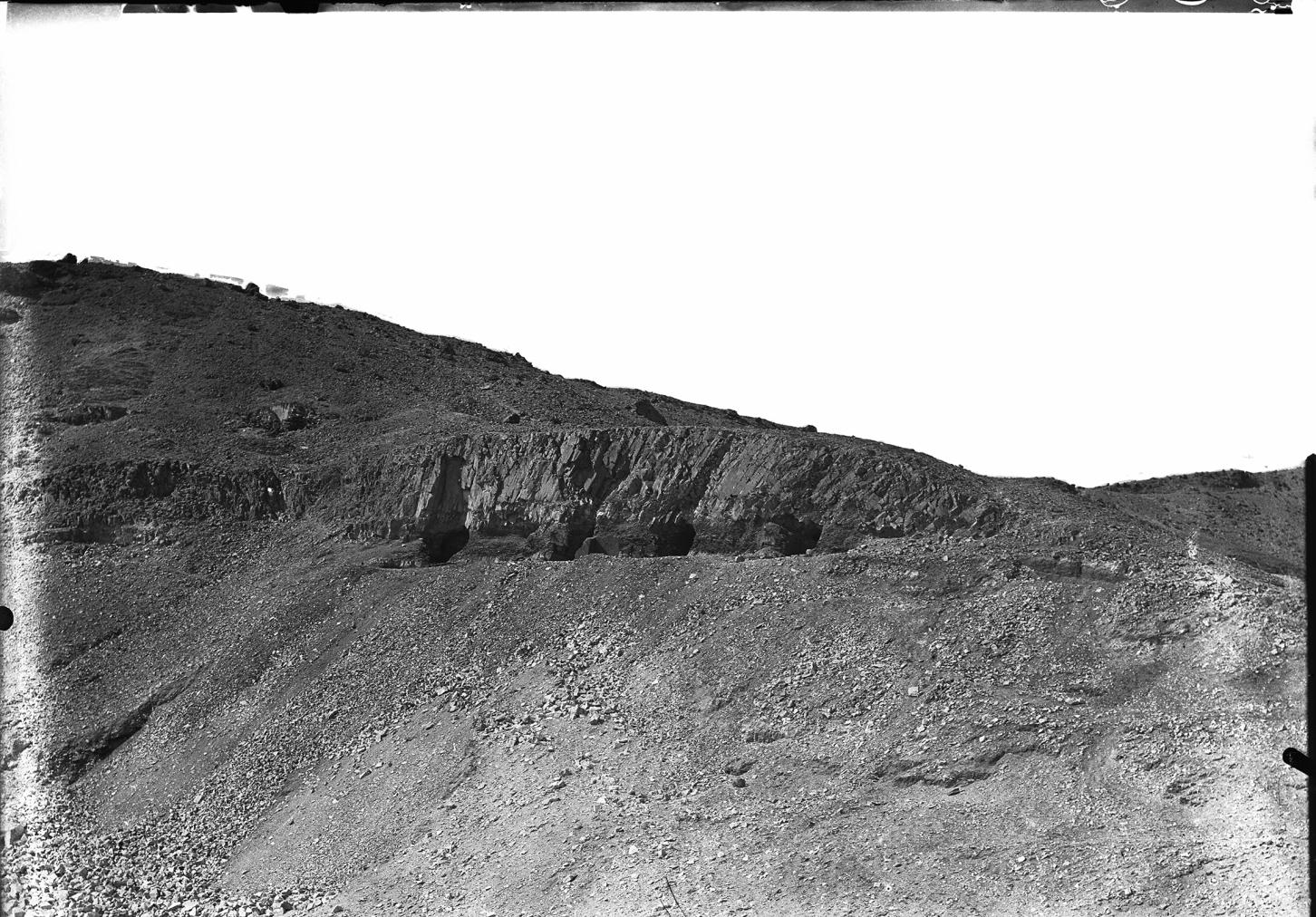
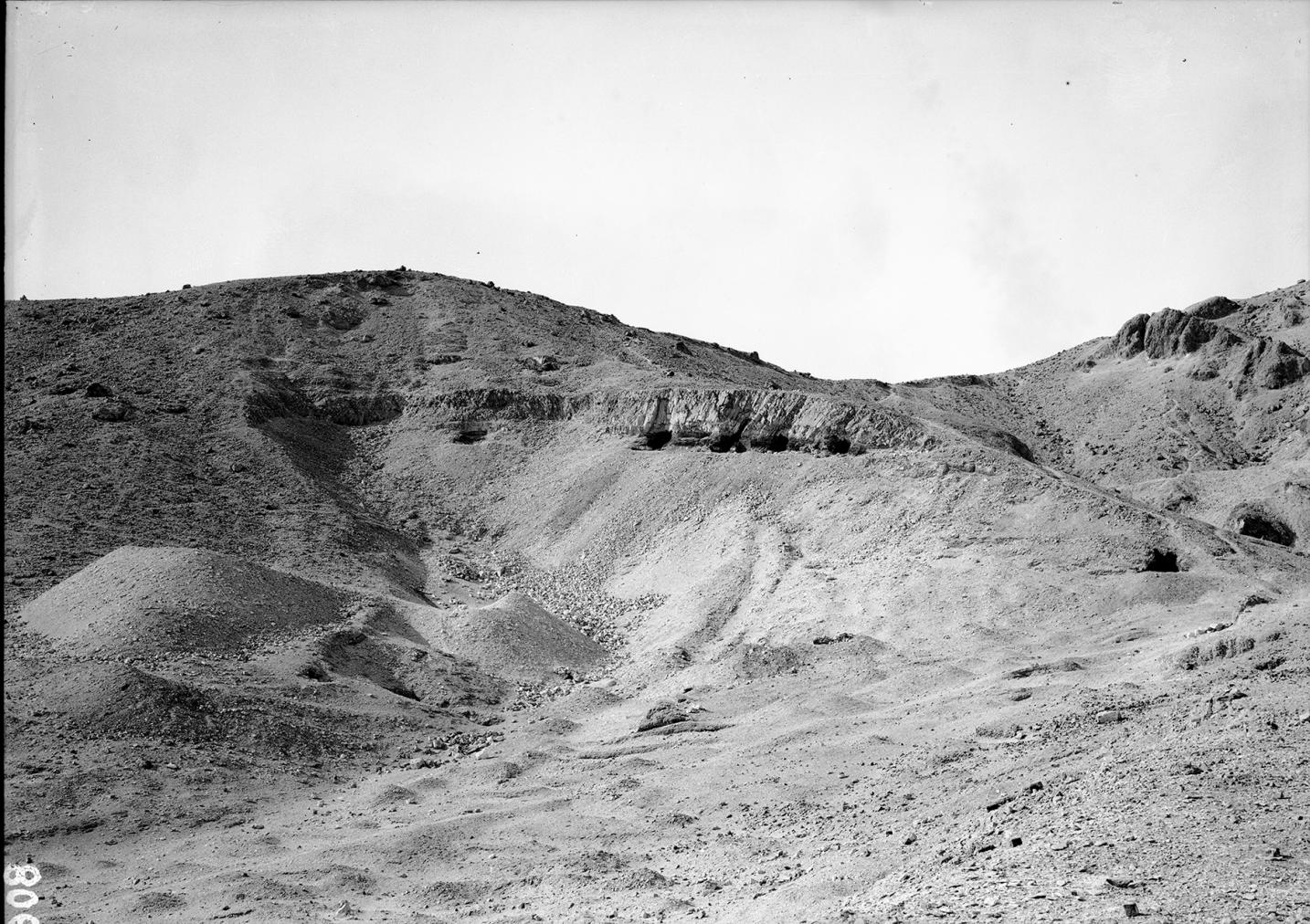


Articles
Tomb Numbering Systems in the Valley of the Queens and the Western Wadis
Geography and Geology of the Valley of the Queens and Western Wadis
The Italian Mission in the Valley of the Queens (1903-1905): History of excavation, Discoveries, and the Turin Museum Collection
Bibliography
Ballerini, F. Notizia sommaria degli scavi della missione archeologica italiana in Egitto, anno 1903: Valle delle regine. Torino: Museo di antichità, 1903.
Demas, Martha and Neville Agnew (eds). Valley of the Queens. Assessment Report. Los Angeles: The Getty Conservation Institute, 2012, 2016. Two vols.
Franco, Isabelle. Fragments de «Livre des Morts» sur toile: découverts dans la Vallée des Reines. Bulletin de l'Institut français d'archéologie orientale 88 (1988): 71-82.
Leblanc, Christian and Magdi Mohamed Fekri. L’exploration archéologique des vallées laterales de tA st nfrw. Atti del Sesto Congresso Internazionale di Egittologia. Vol. 1. Turin: International Association of Egyptologists, 1993: 259-268.
Leblanc, Christian, and Alberto Siliotti. Nefertari e la valle delle regine. 2nd ed. Florence: Giunti, 2002.
Schiaparelli, Ernesto. Realazione sui lavon della Missione archeologica italiana in Egitto, anni 1903-1020: la tomba intatta dell’architetto Cha: nella necropoli di Tebe. Vol. 2. Turin: Casa editrice Giovanni Chiantore, 1927.
